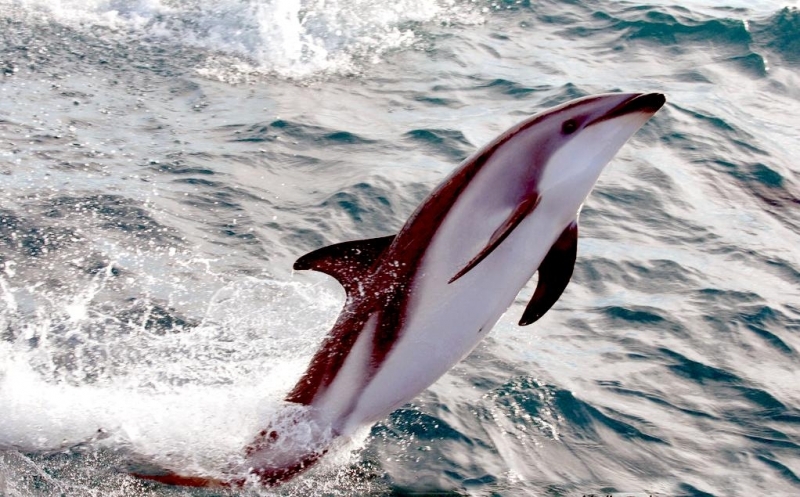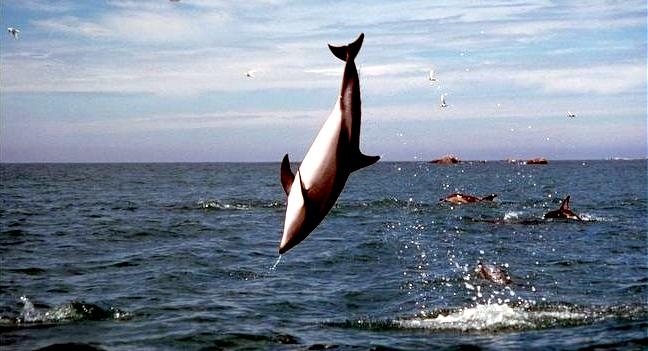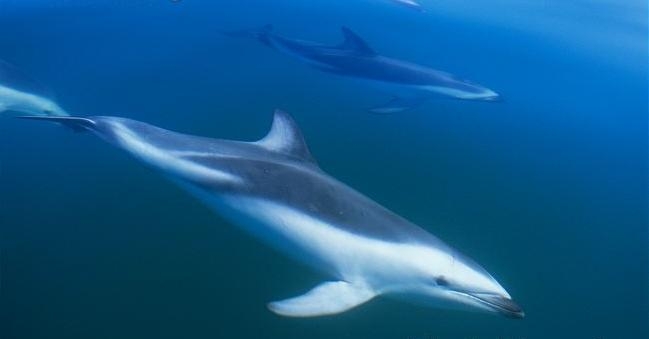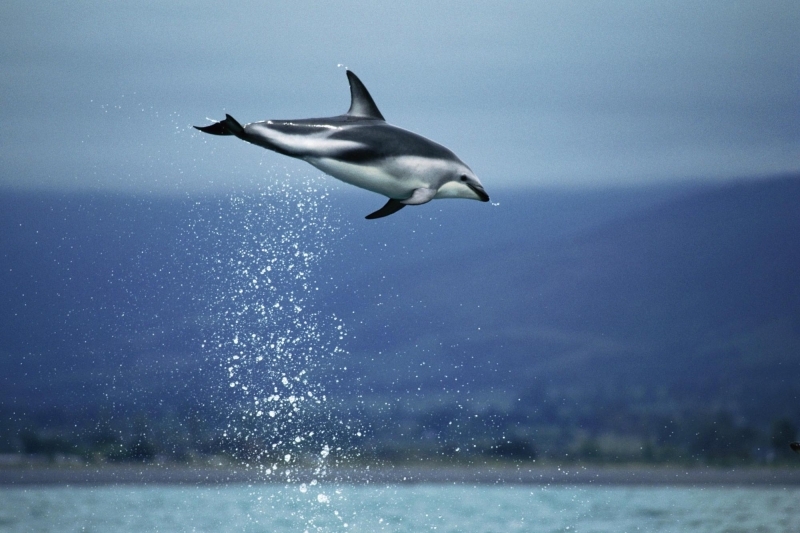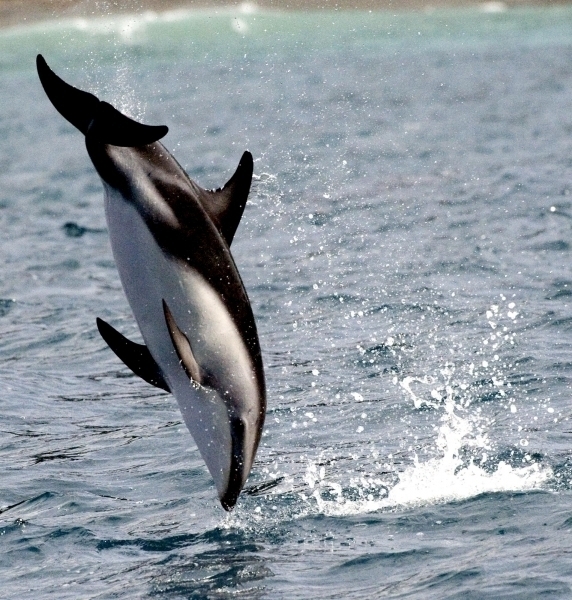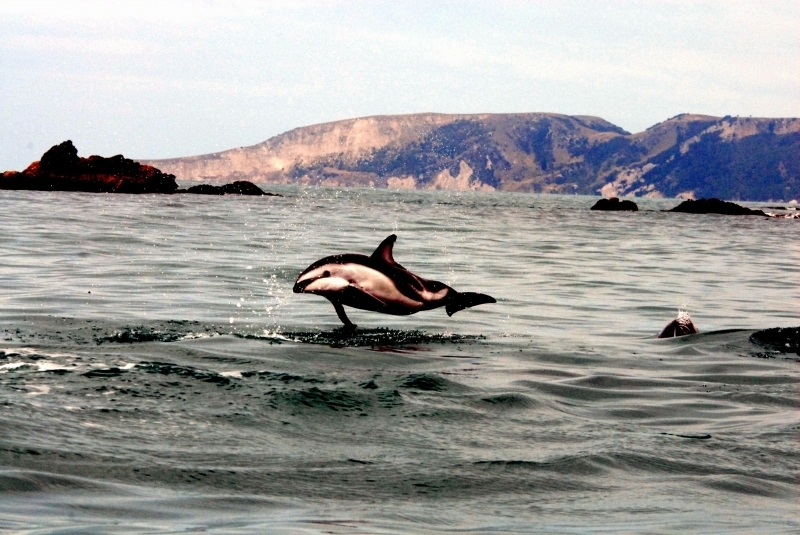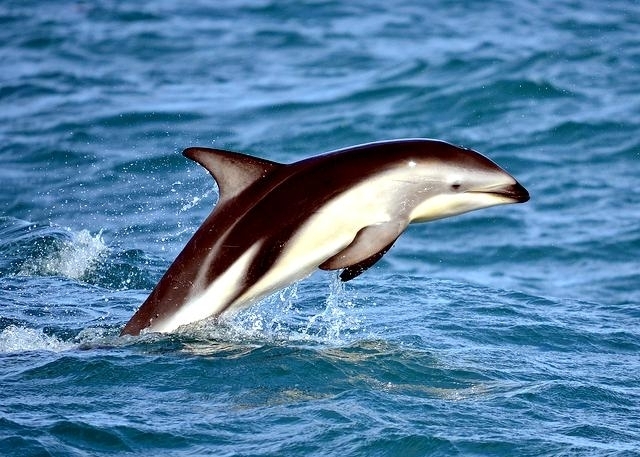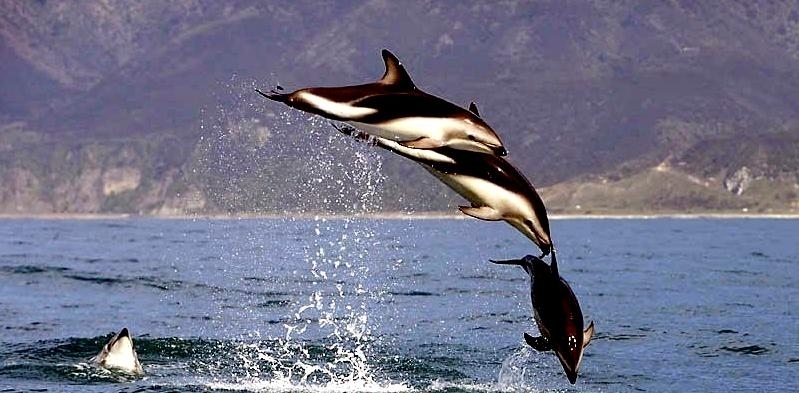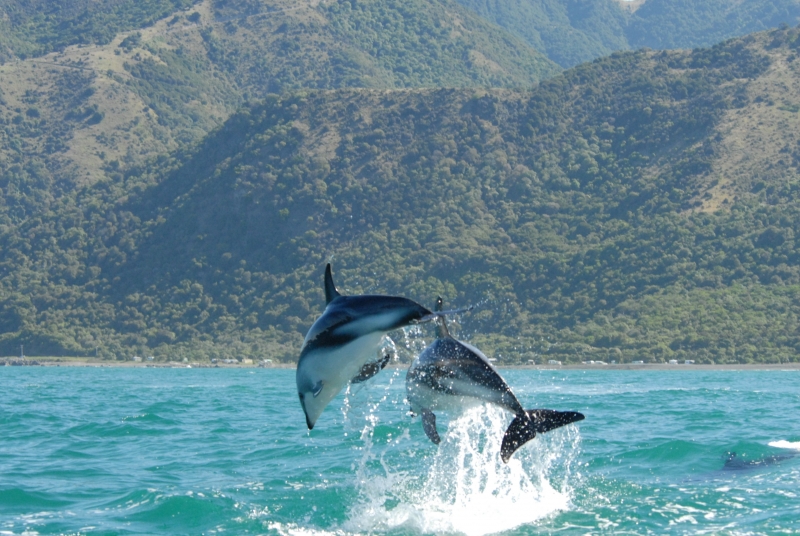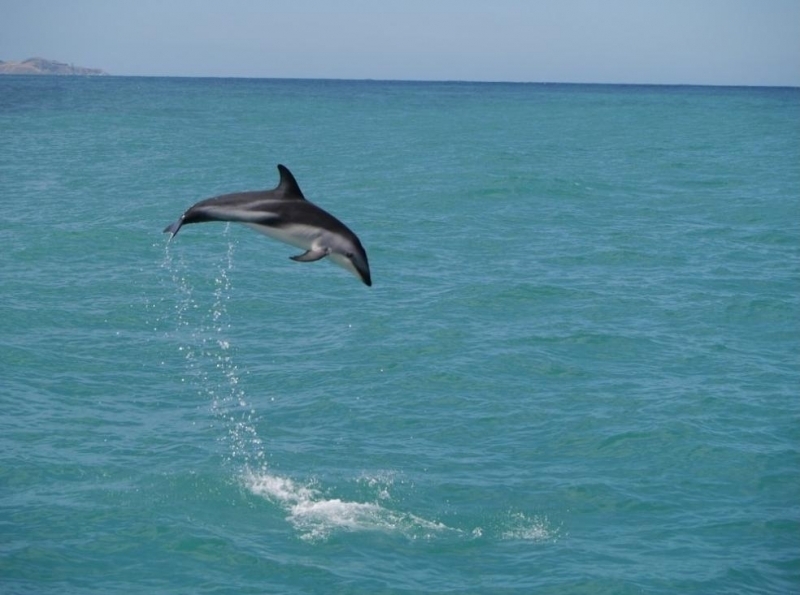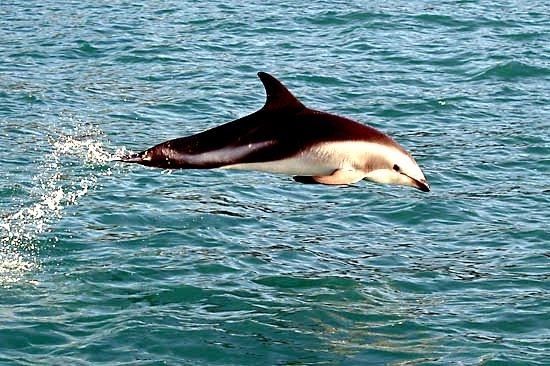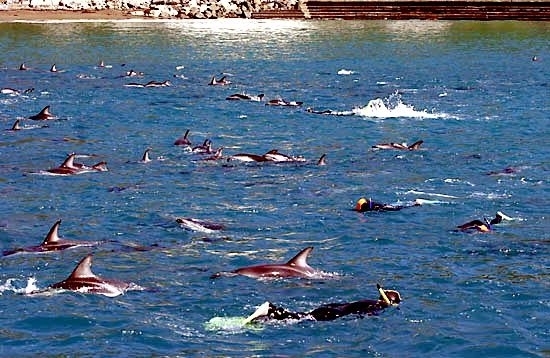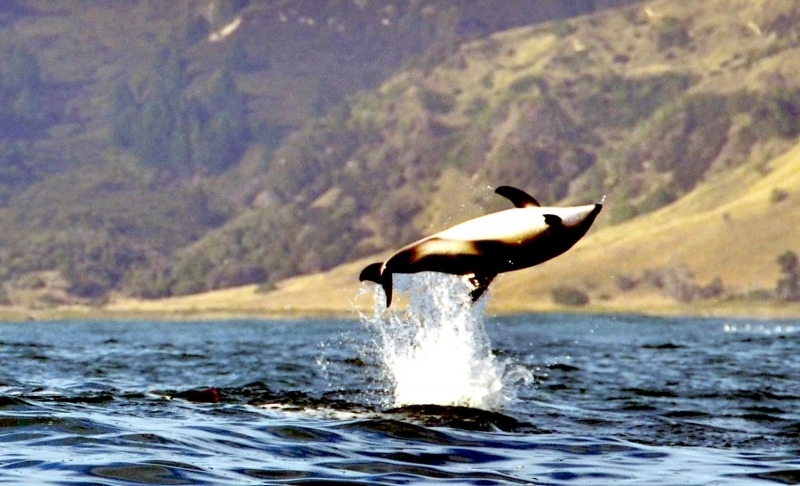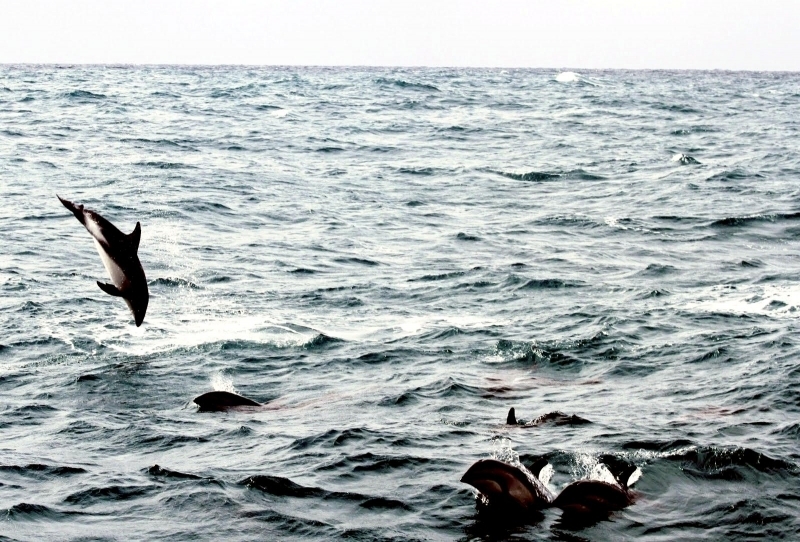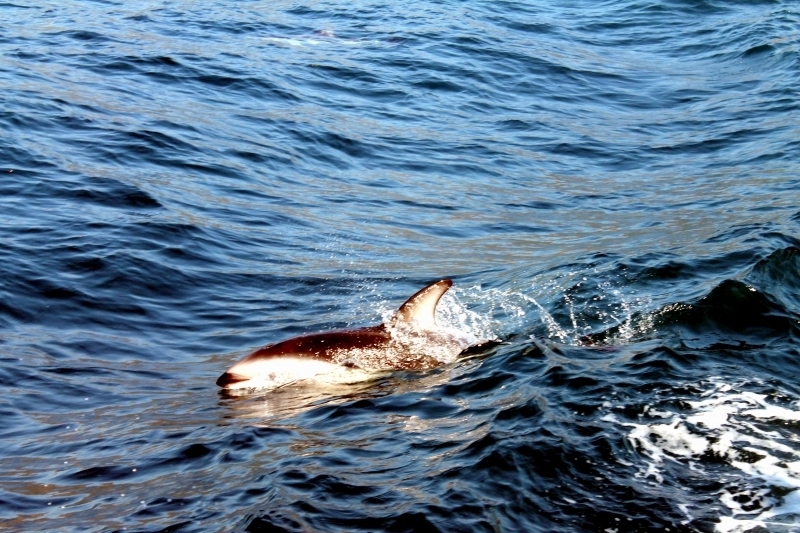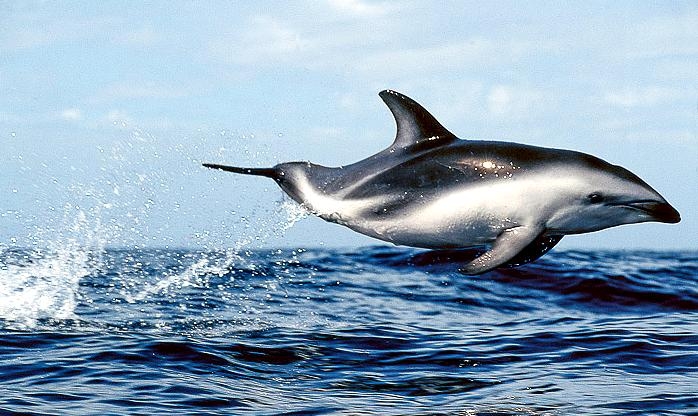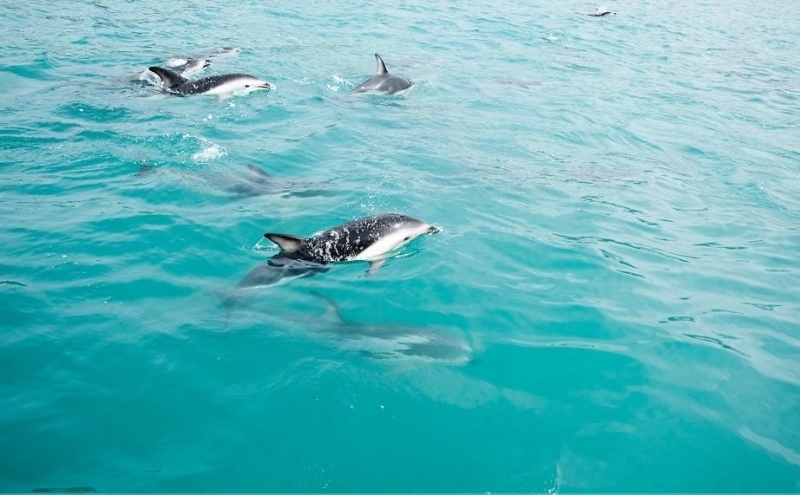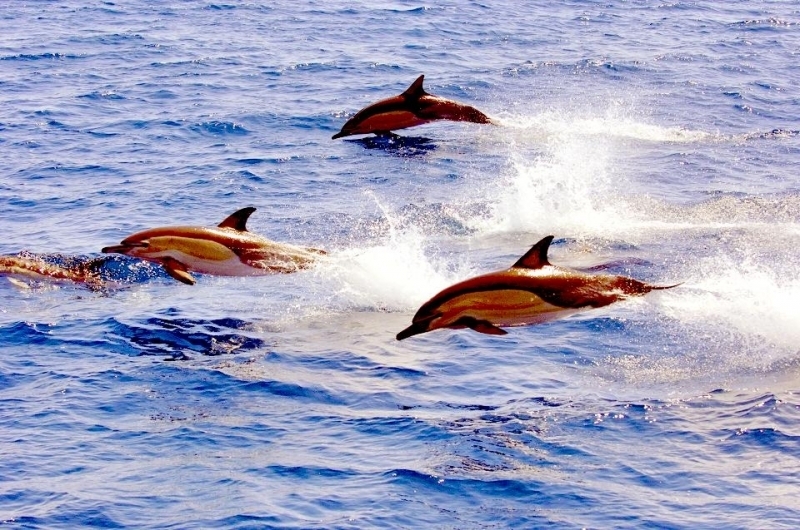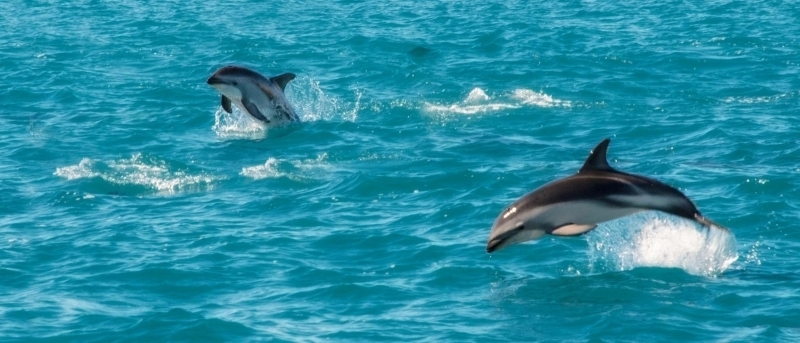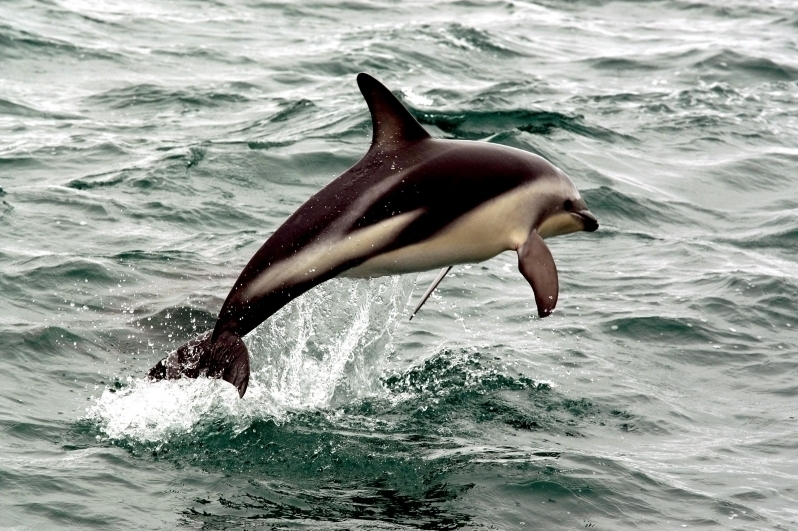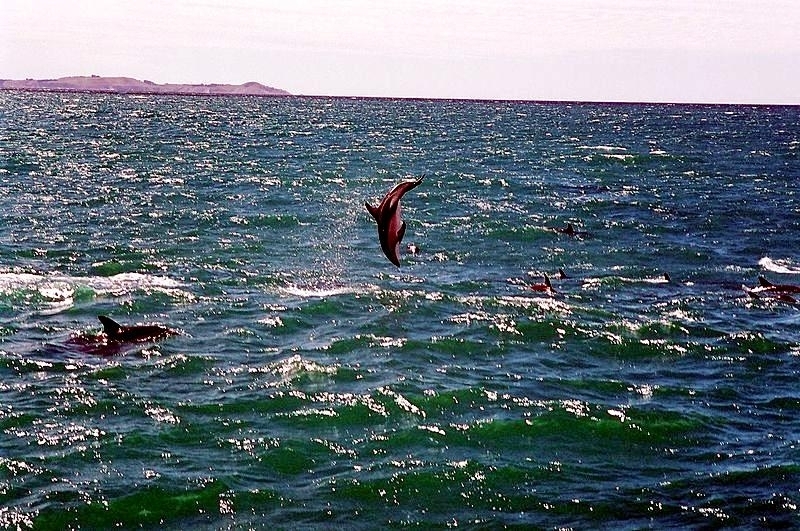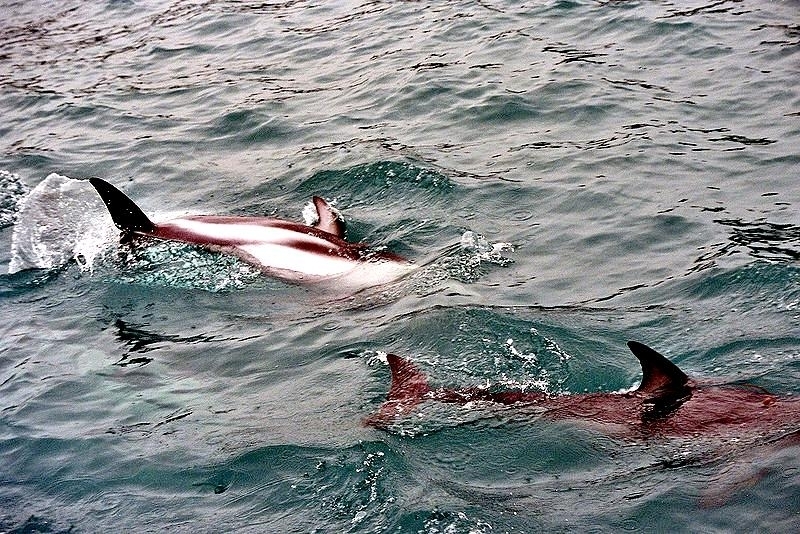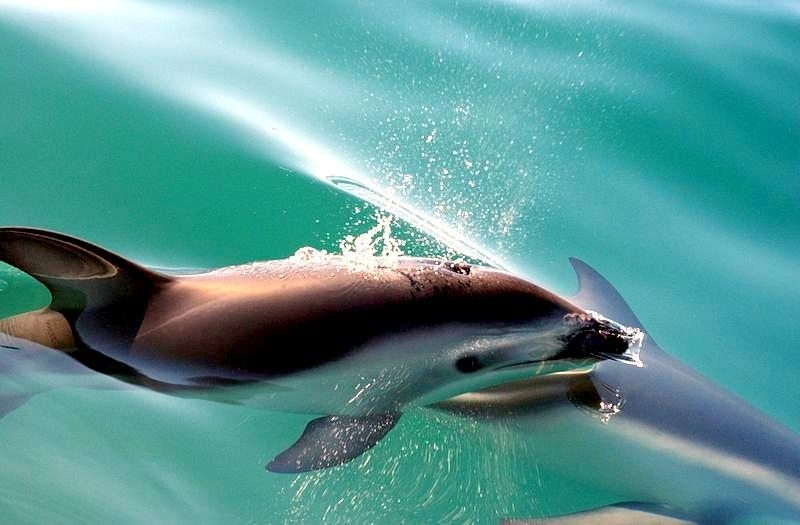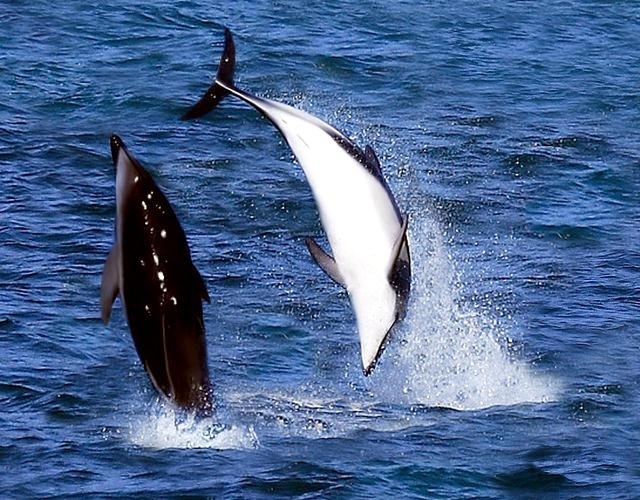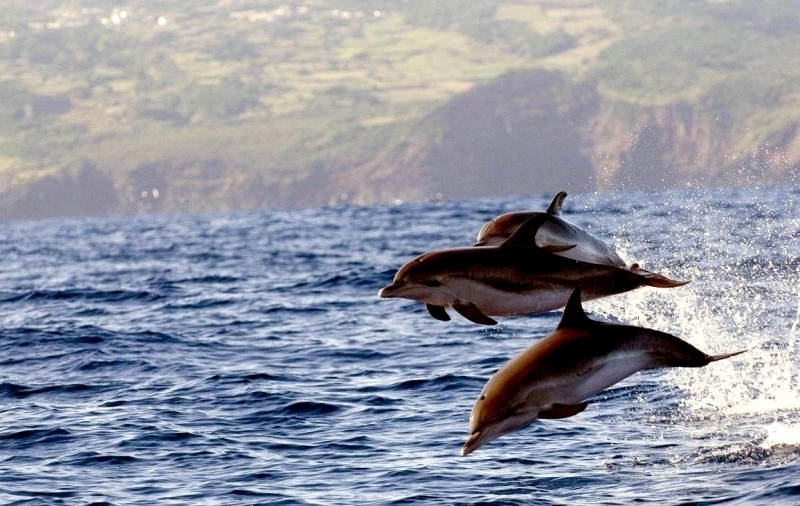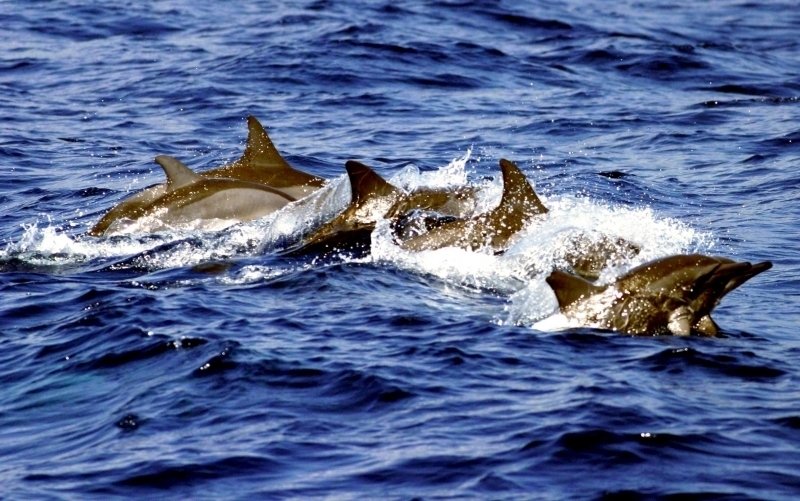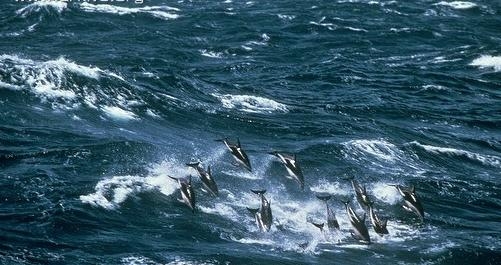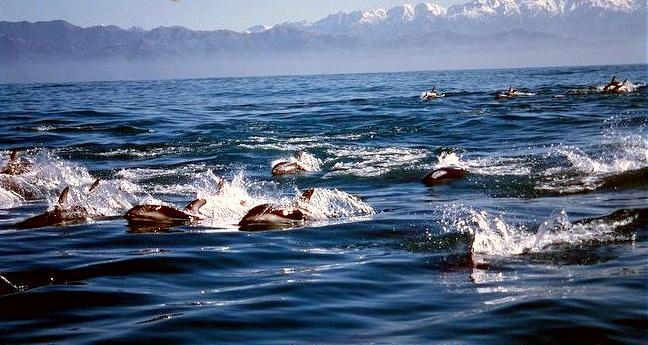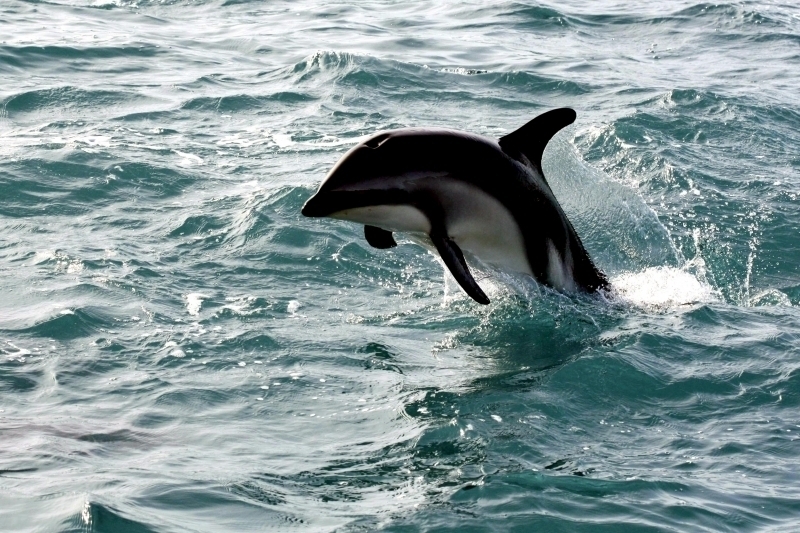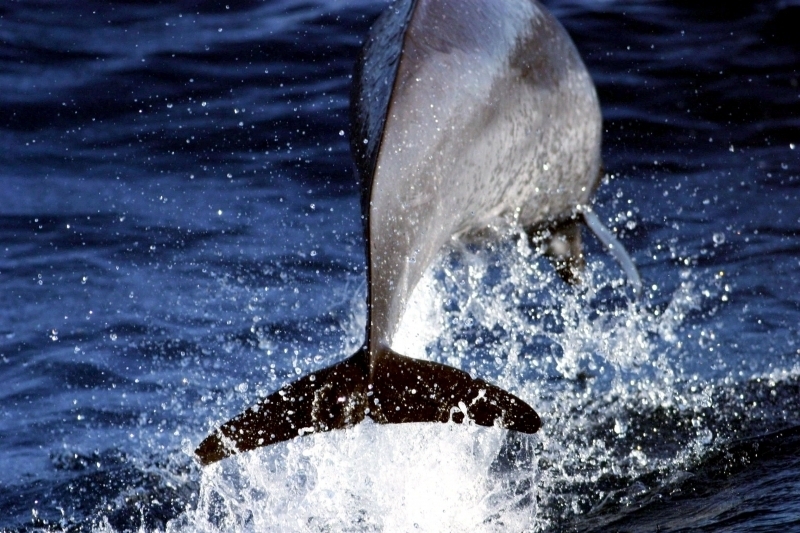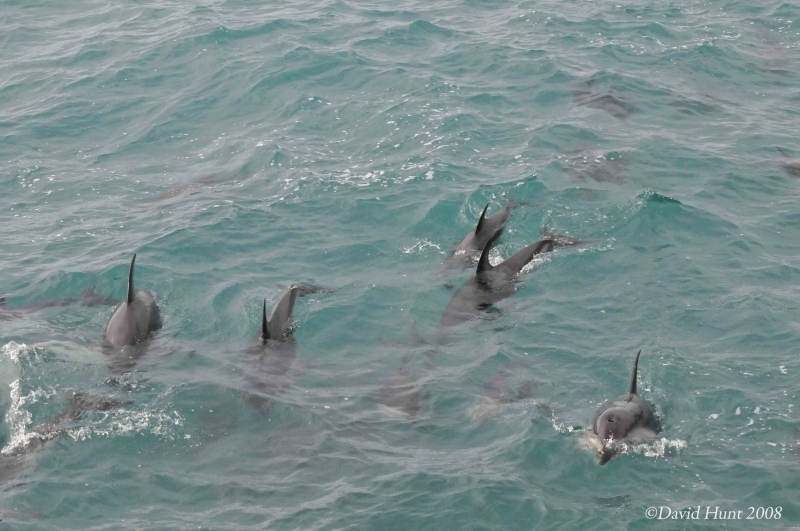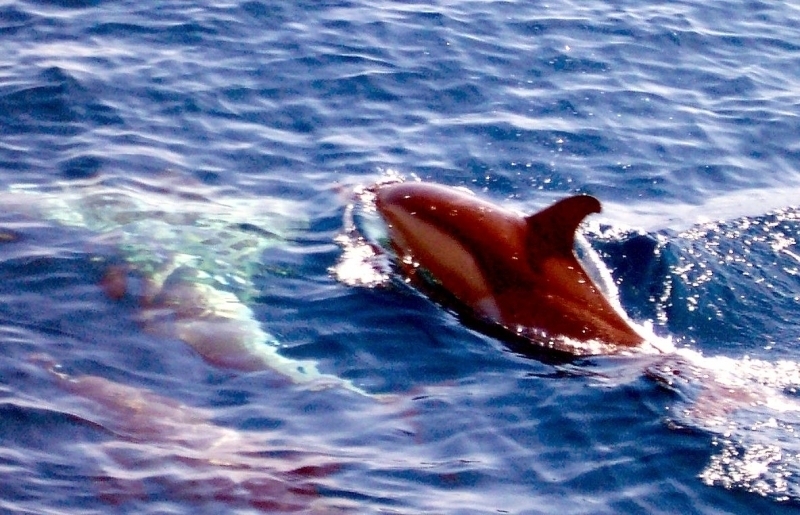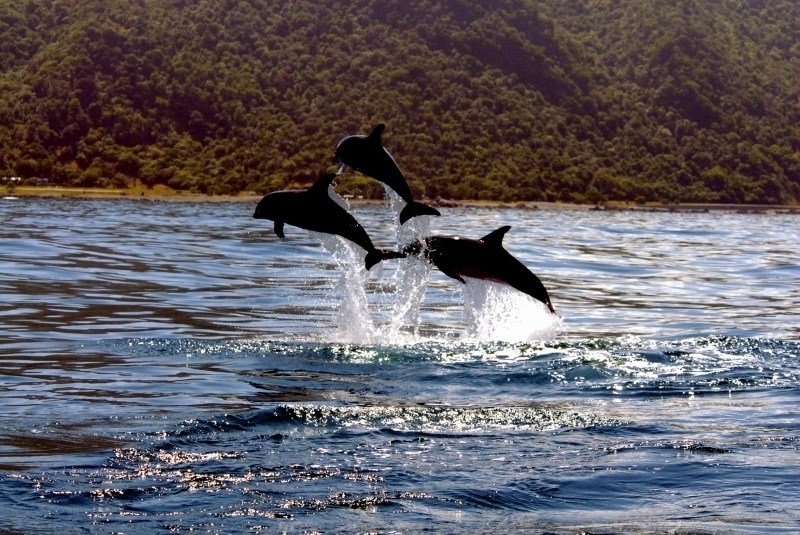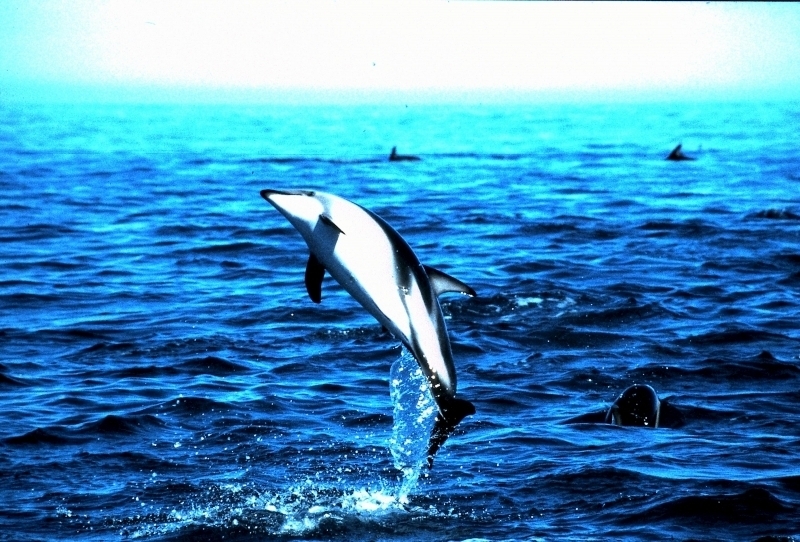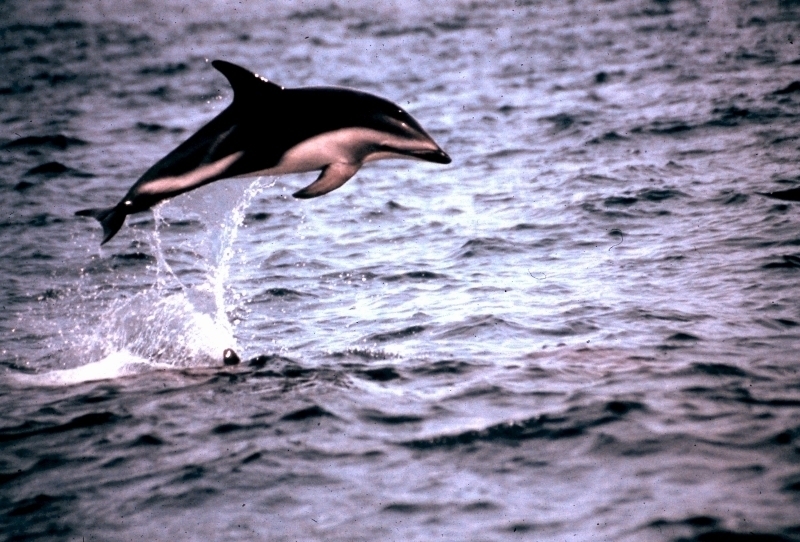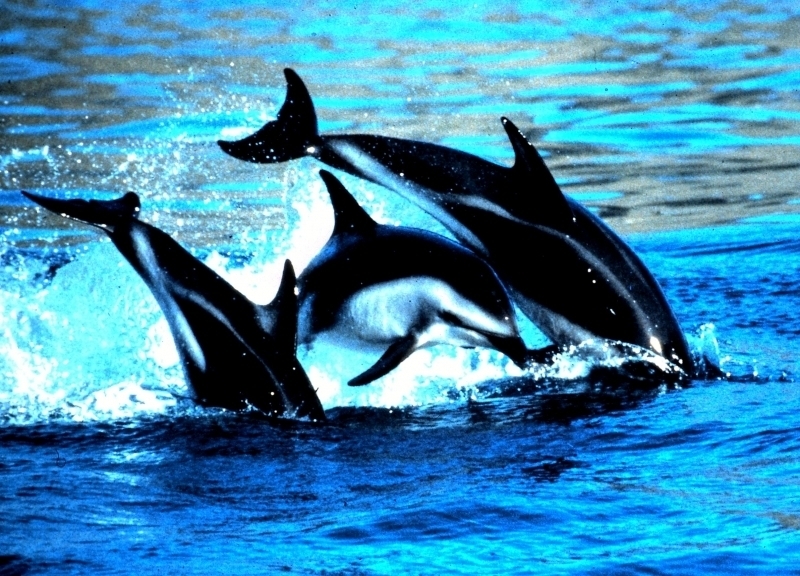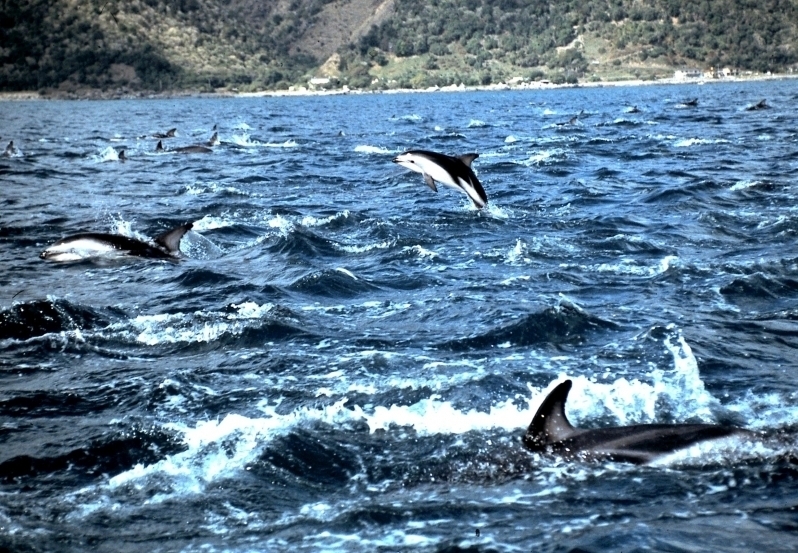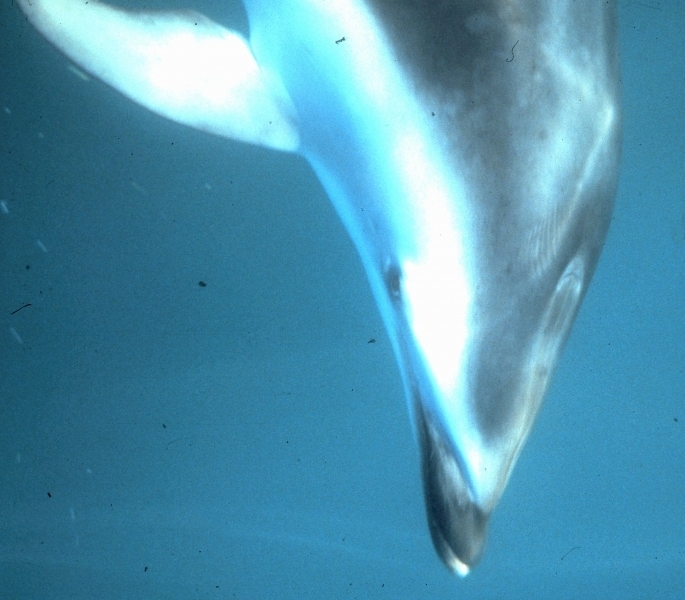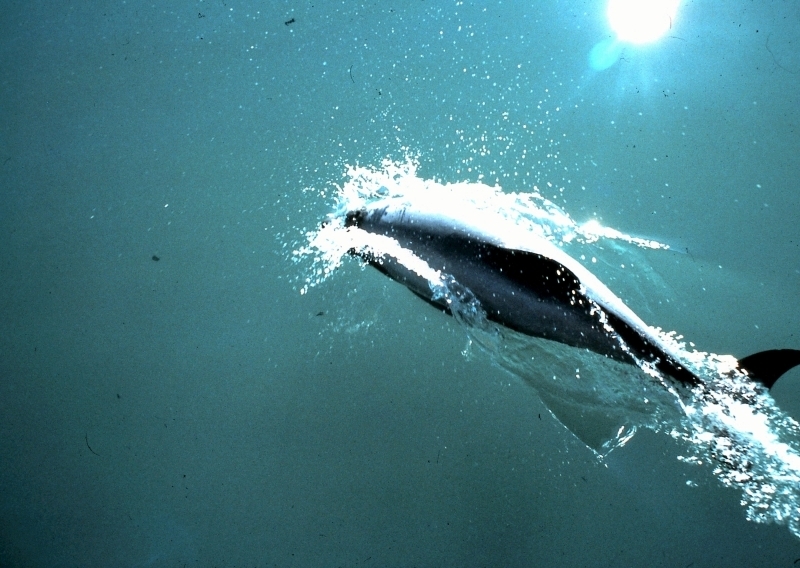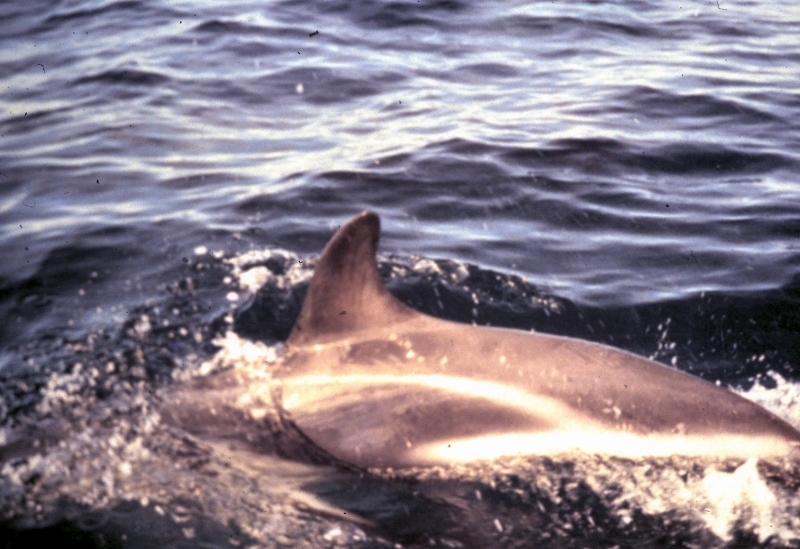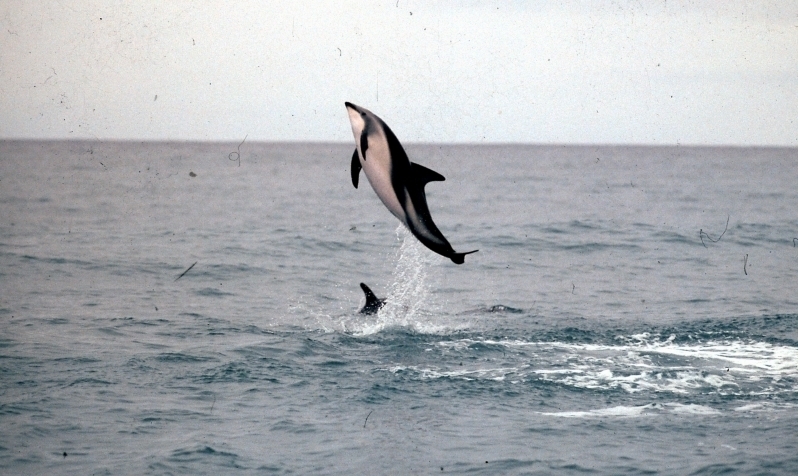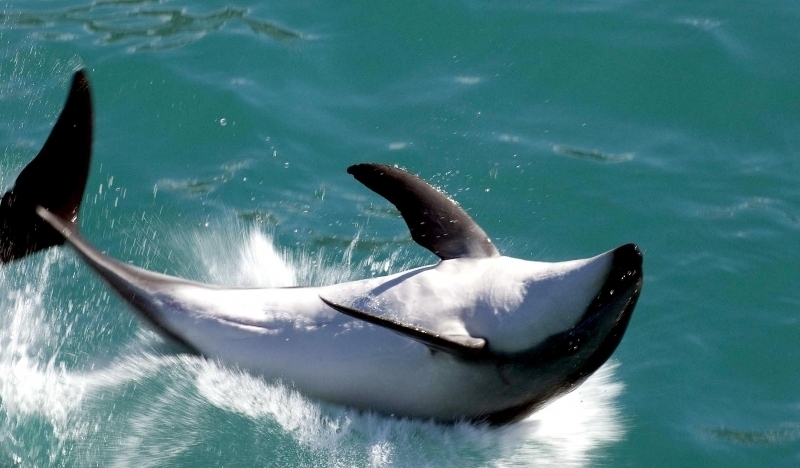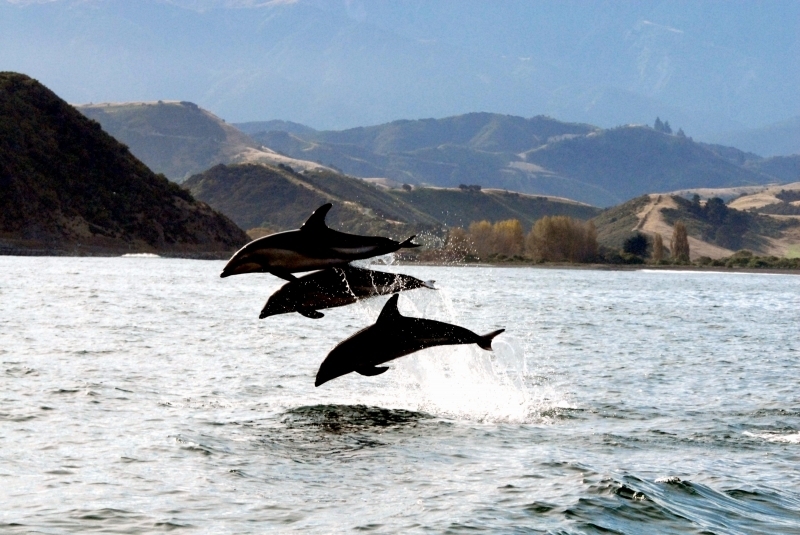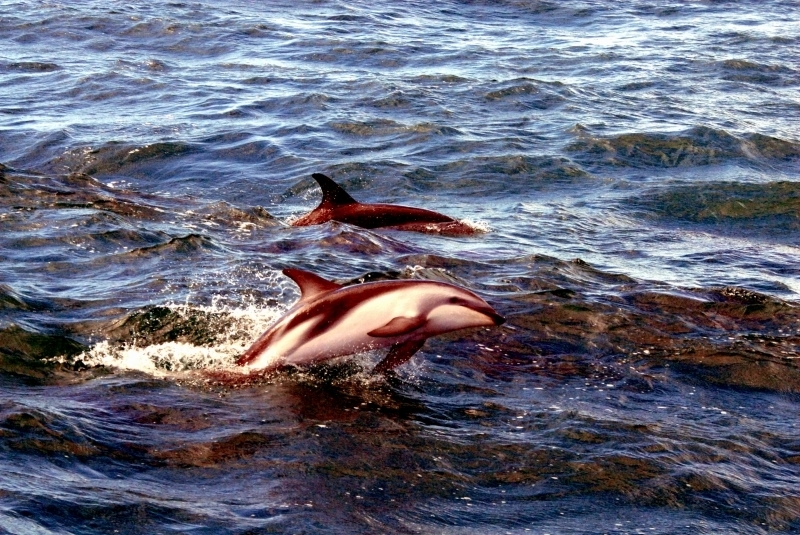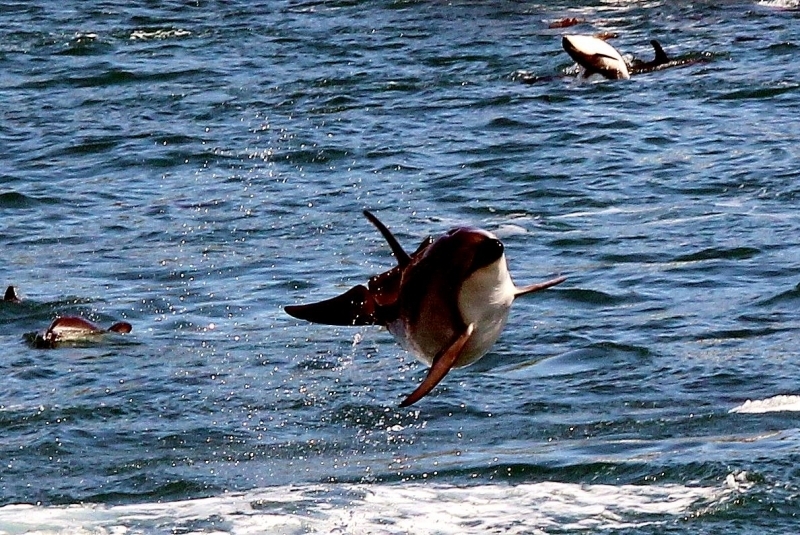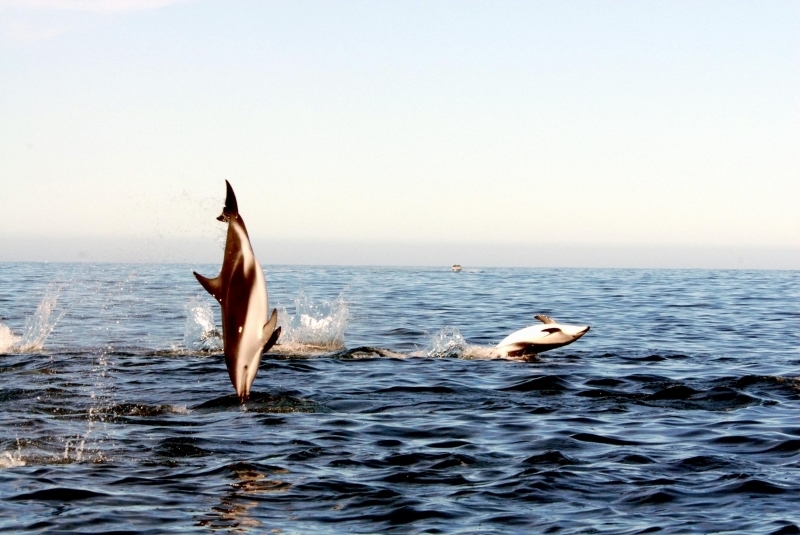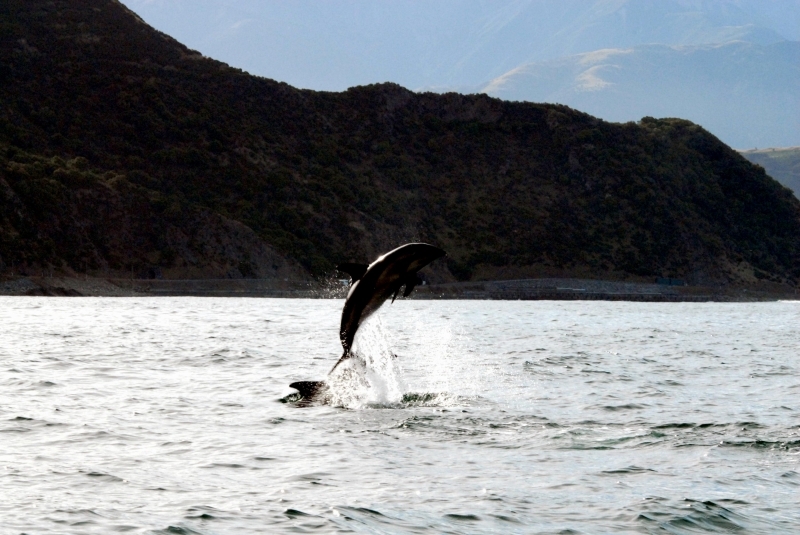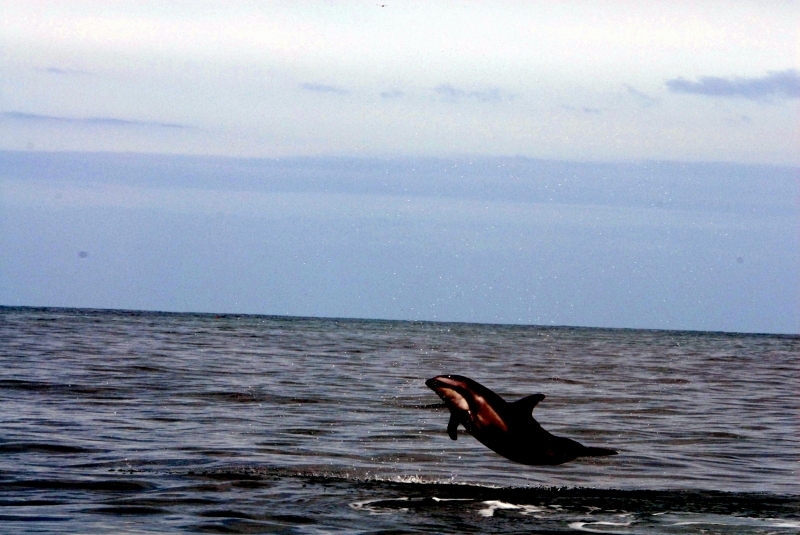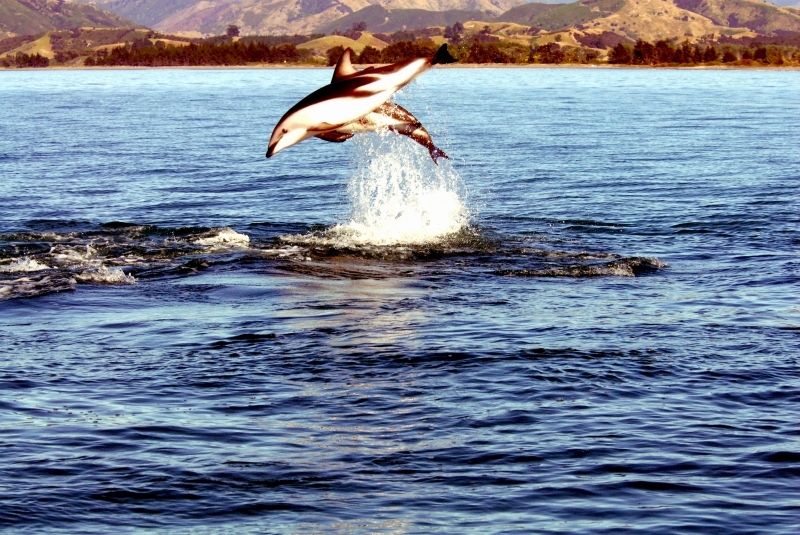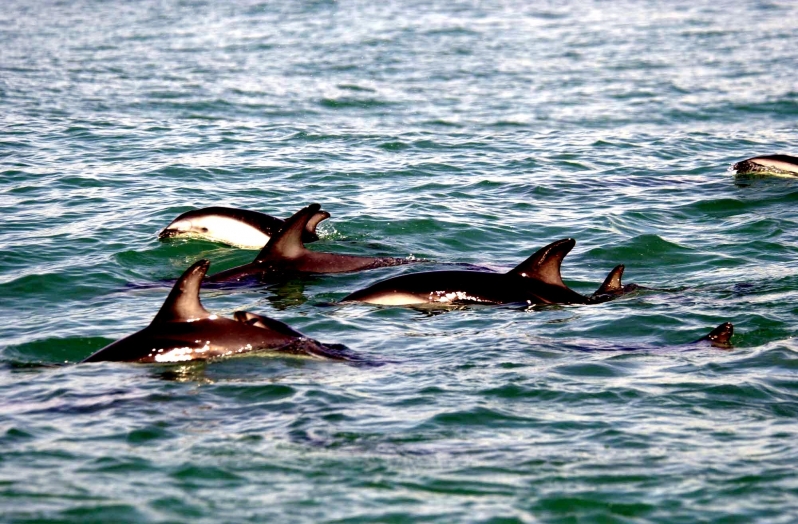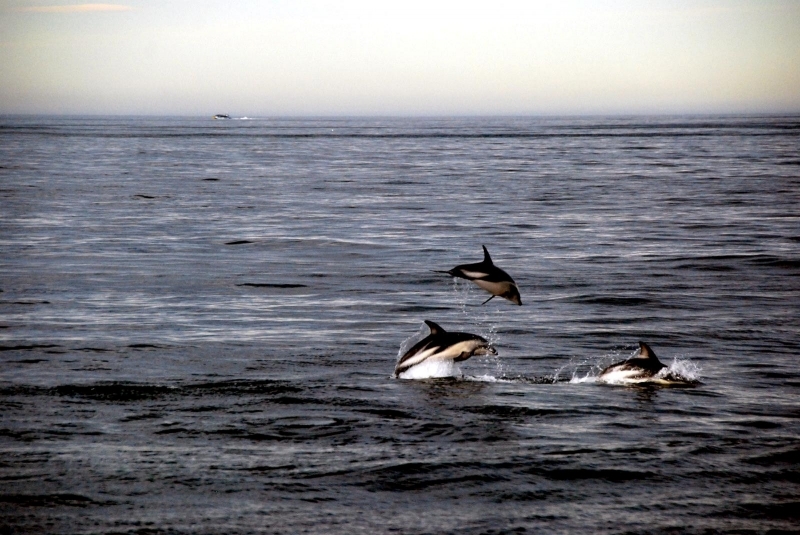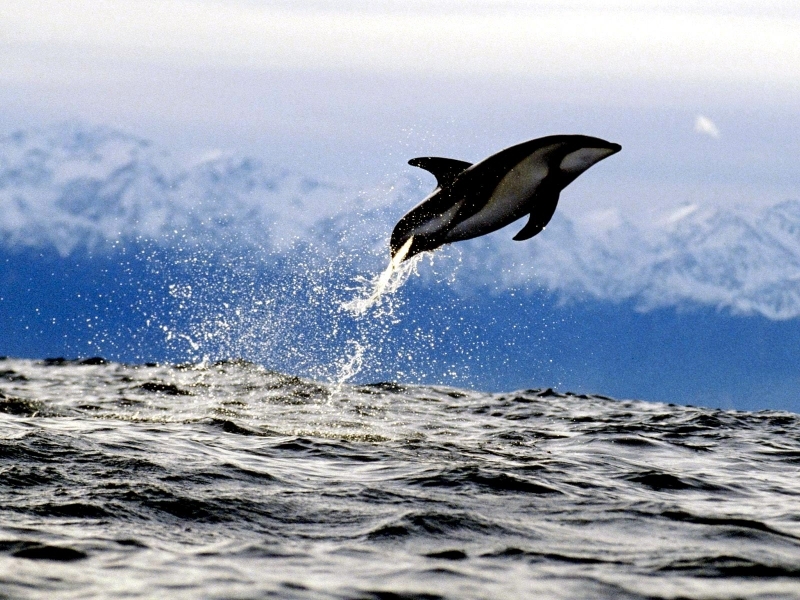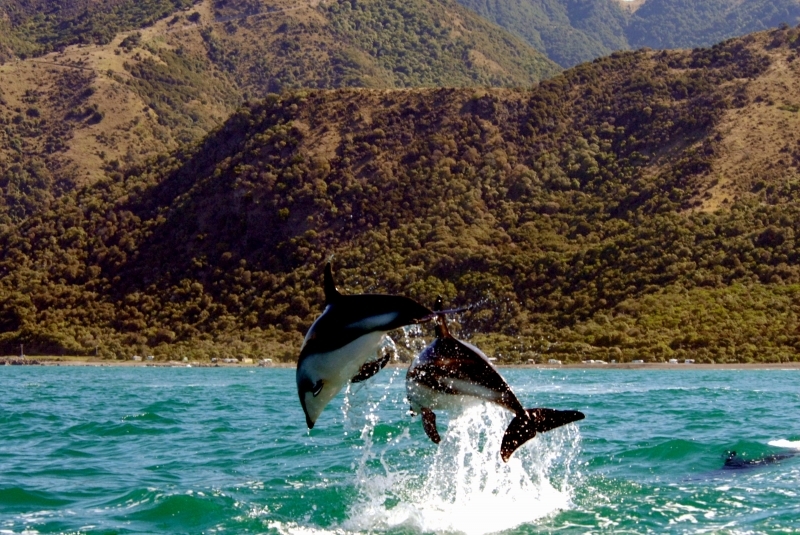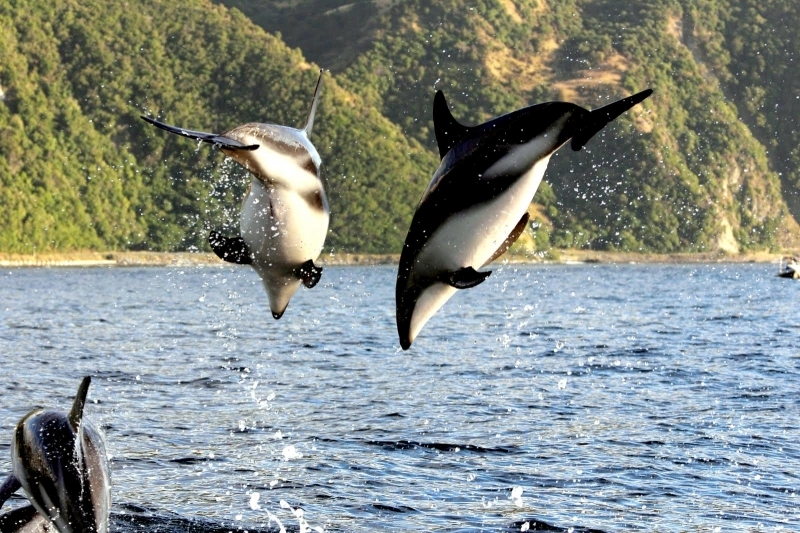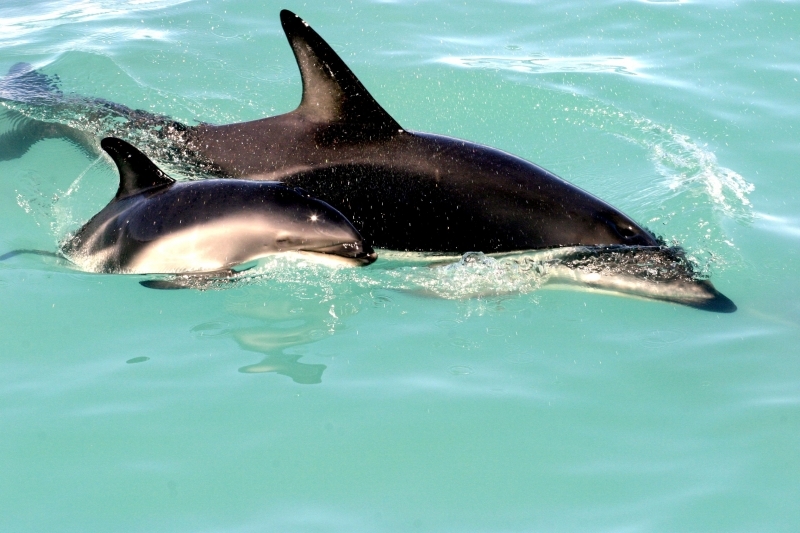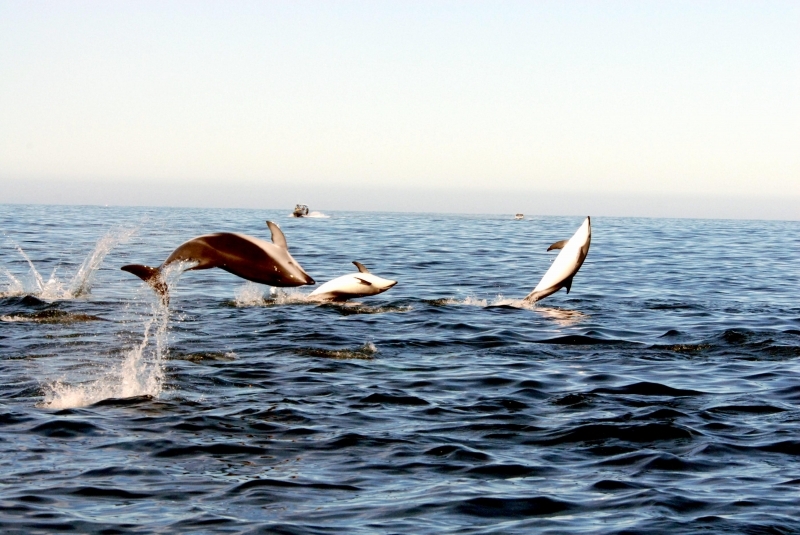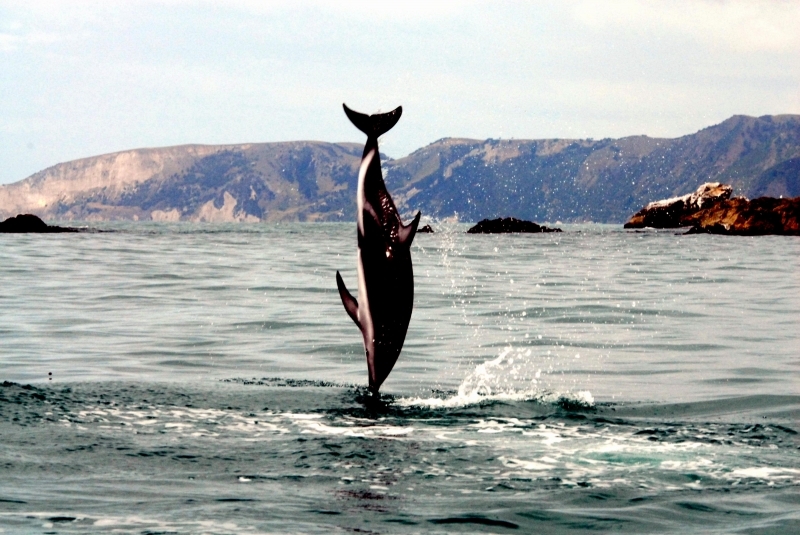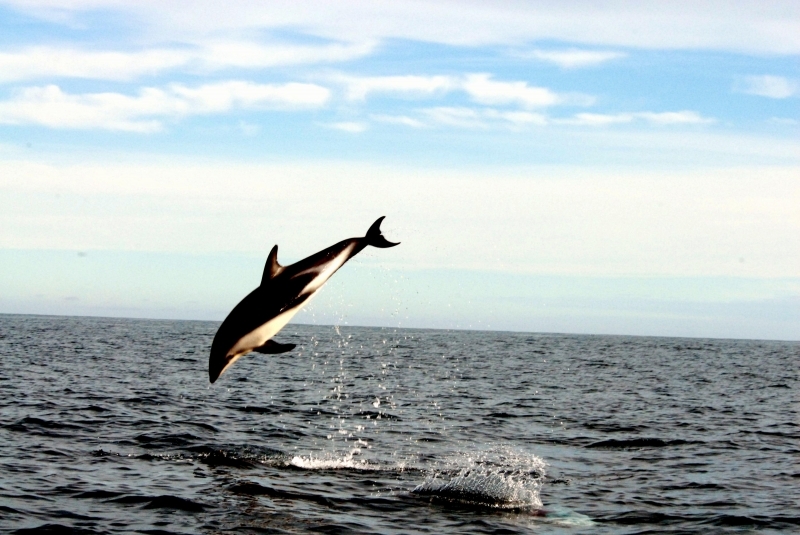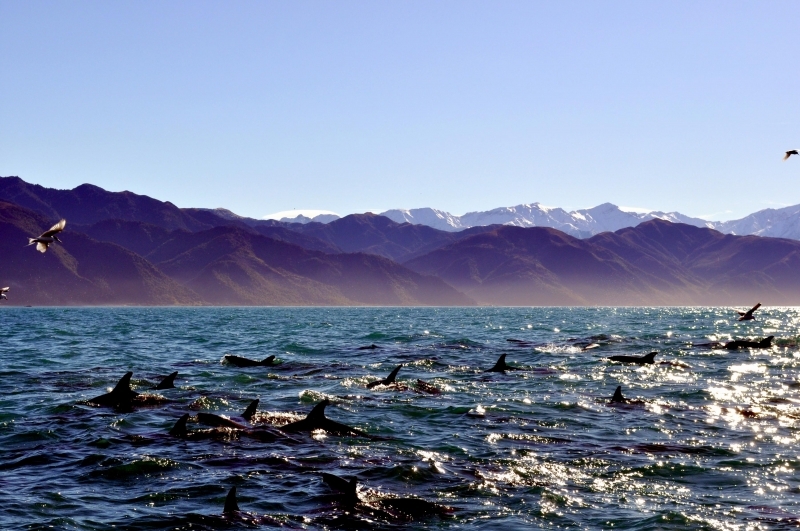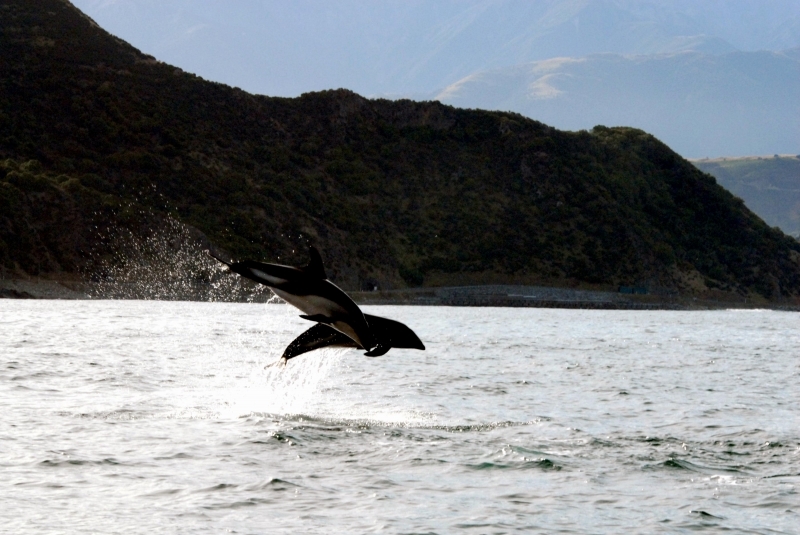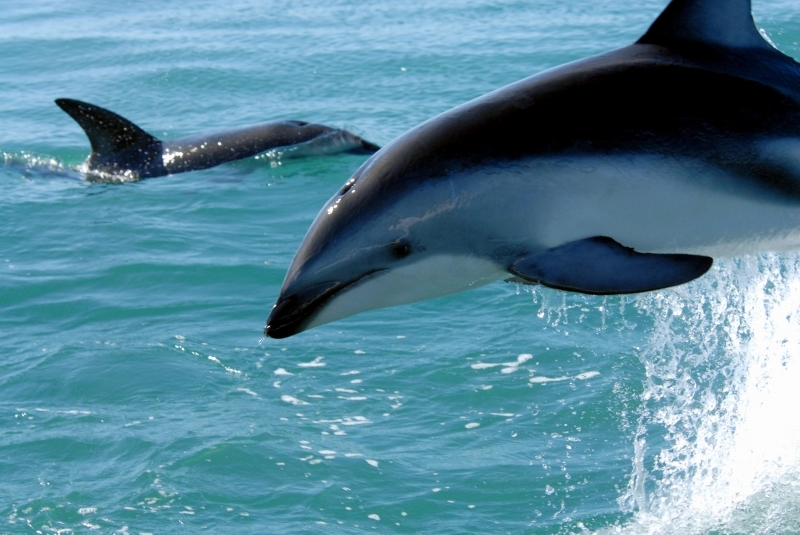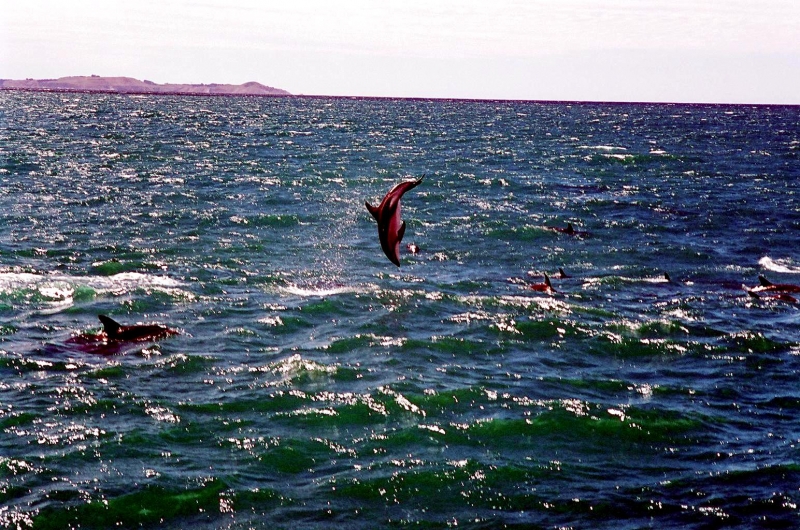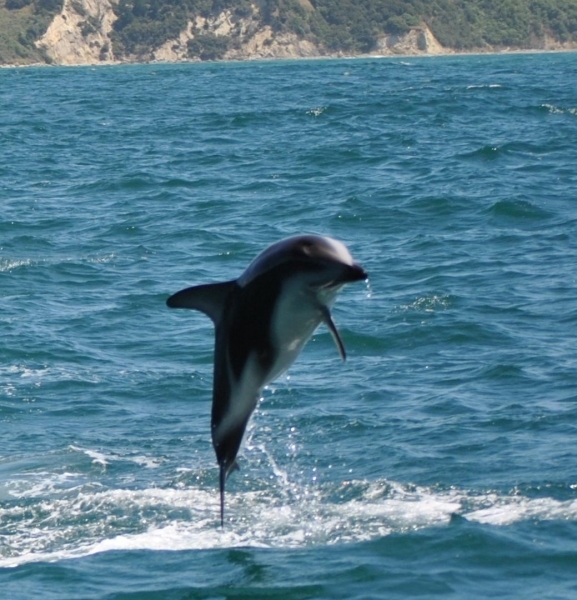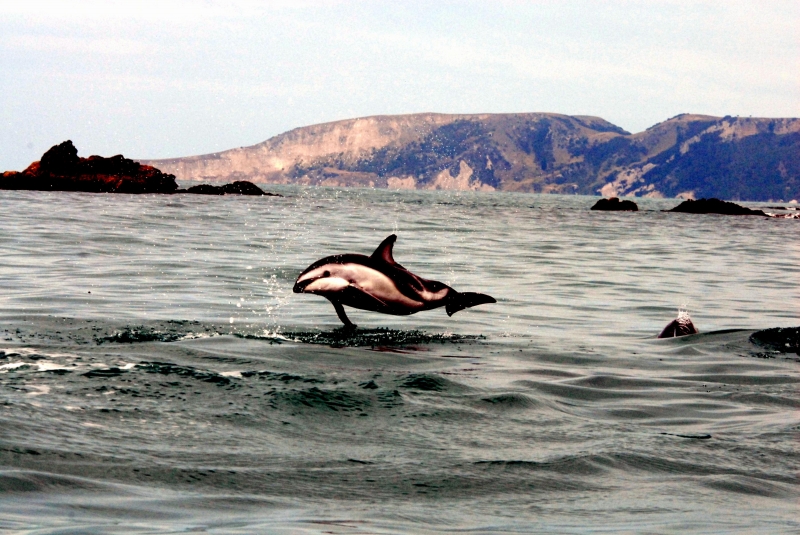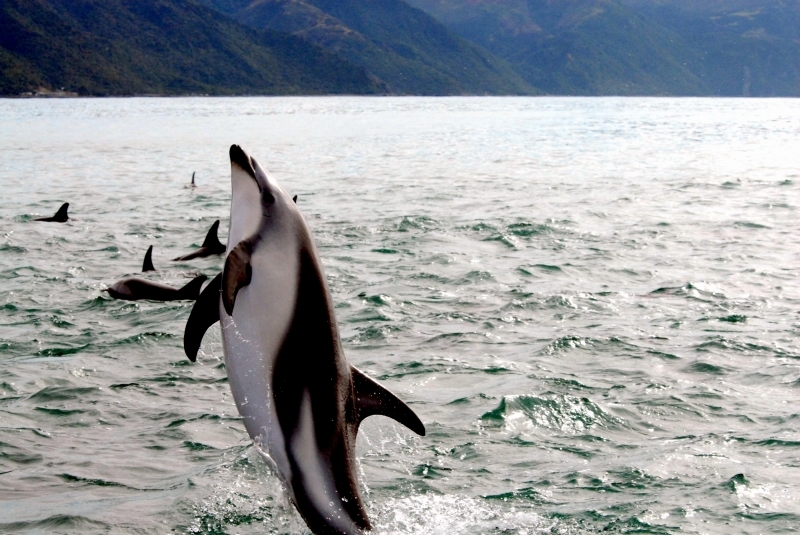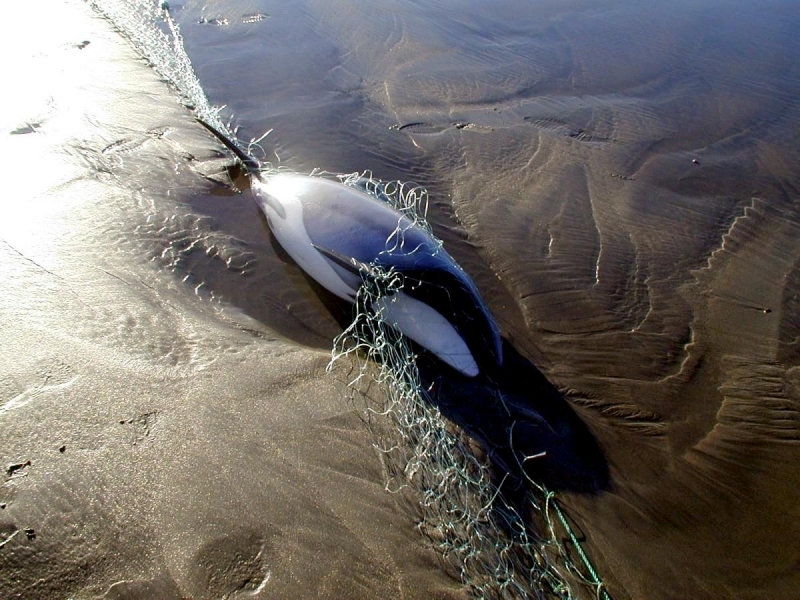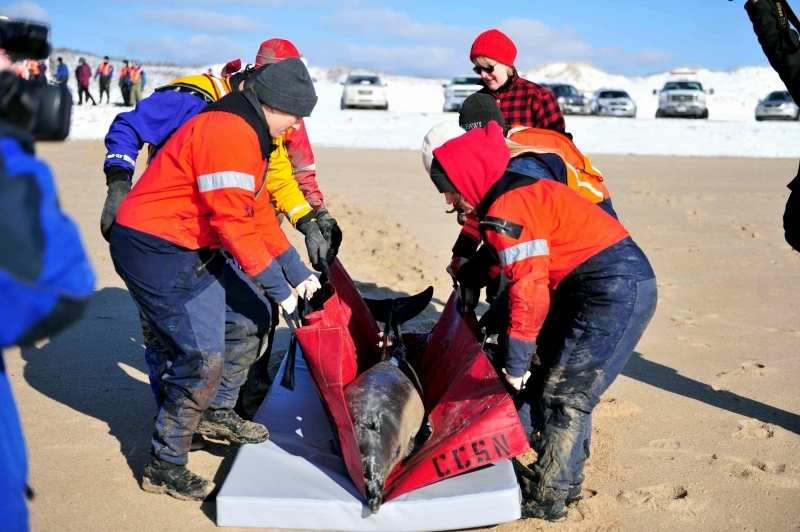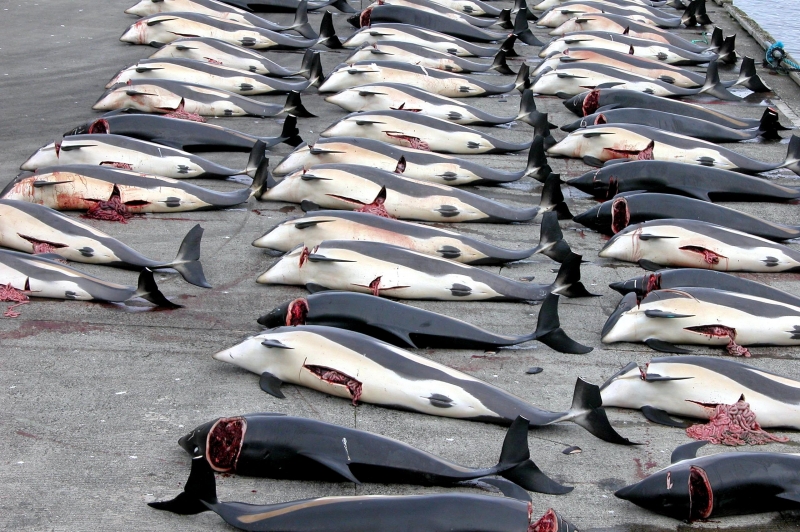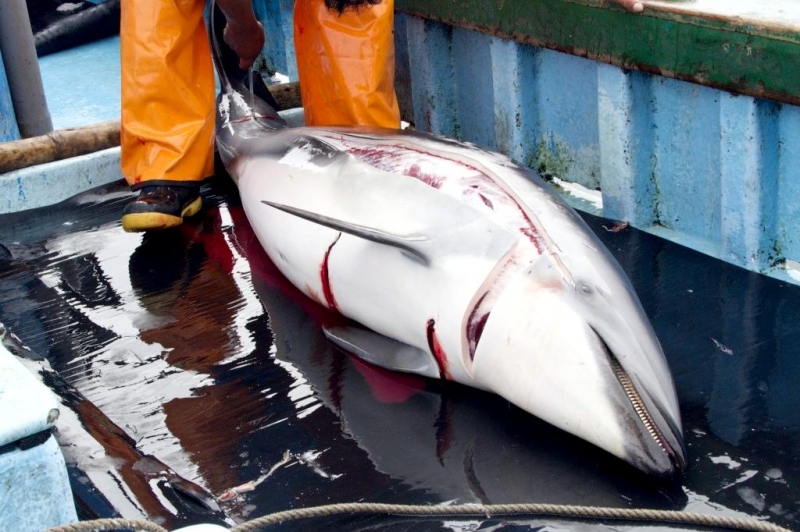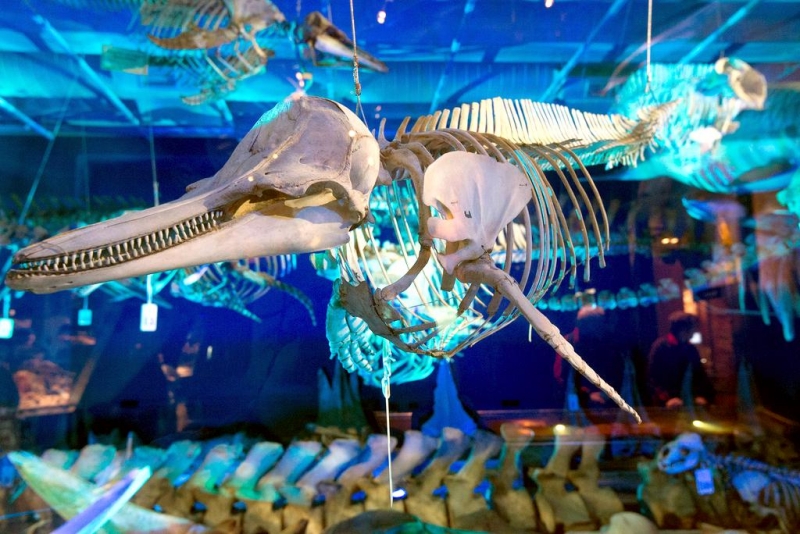“Lagenorhynchus obscurus”
The Dusky Dolphin is a small species of dolphin that is found inhabiting the cooler waters along continental shelves throughout the southern hemisphere. It is commonly thought that the Dusky Dolphin was first described by John Edward Gray in 1828 from stuffed skin and a single skull shipped from the Cape of Good Hope to the British Museum. It gained its current name from American biologist Dr. Frederick W. True in 1889. Dusky Dolphins are widespread throughout the southern hemisphere with 3 species being recognized that have been grouped by their geographical range, with one found off the coast of South America, one near South Africa in the Indian Ocean and another in the deeper waters close to New Zealand. Dusky populations have declined throughout much of their natural range primarily due to threats caused by increasing levels of human activity. The Dusky Dolphin is the smallest of the world’s 33 different species of dolphin growing to under 2 meters in length and generally weighing less than 100 kilograms. Like other species of cetacean, they have a smooth & hairless, streamlined body that helps them to glide through the water and is powered by their 2 tail flukes which lay horizontally rather than vertically like those of fish. The upper-side of their bodies is either dark grey or blue-black in color and is separated from their light gray to white under-side by a grey line which runs from their beak to the base of their tail. Dusky Dolphins also have 2 light grey lines which run diagonally from their tail to their dorsal fin which is tall and curved to help them to change direction quickly in the water. The beak of the Dusky is black and more rounded in shape than those of other dolphin species and contains between 24 and 36 pairs of sharp, cone-shaped teeth that are ideal for catching slippery and fast-moving prey.
Dusky Dolphins tend to be found in cool to temperate waters (10-18 °C) close to continental shelves throughout the southern hemisphere and seem to prefer shallower rather than deep water regions although this can vary depending on the location and time of year. Although they are not generally known to participate in seasonal migrations, they can travel vast distances across the ocean and at great speed in search of food. Dusky Dolphin populations have been decreasing mainly due to interaction with humans including being hunted for their meat and getting caught in the nets that are used to catch the shoaling fish which they hunt. The exact behaviors & habits of Dusky Dolphins depends on the species and where they live however, they generally spend time close to the shore resting during the day in small pods that consist of between 10 to 35 individuals. As night falls, these small pods begin to travel further away from land to feed and form pods consisting of up to 1,000 individuals that include both male & female members in order to work together to corner shoals of fish. Dusky Dolphins are incredibly sociable animals and can be seen playing and leaping together after feeding before breaking up into their smaller pods again to return closer to the coast to rest. Although they are able to dive for up to 90 seconds at a time, Duskys must keep returning to the water’s surface to breathe and expel old air from their lungs via the single blow-hole that is located on the top of their heads. They are highly intelligent animals and are often seen leaping out of the water before diving back in after gliding through the air for a few seconds. This technique is known as “porpoising” and enables the Dusky Dolphin to breathe but without having to slow down when chasing prey. Despite being relatively wide-spread across the southern hemisphere, the fast-moving nature of the Dusky Dolphin has meant that it can often be hard to study these animals in the wild and quite little is therefore known about their lifespans in general.
Most calves tend to be born towards the end of the winter and in the early summer months between October & February when the female gives birth to a single offspring after a gestation period that lasts for around 11 months. The calf is fed on the nutritious milk provided by its mother until it is then taught to hunt by her after about a year. Calves tend to remain close their mother until they are around 3 years old when they leave to join a pod of their own (males with often form bachelor groups) and the female is then able to mate again. Dusky Dolphins are thought to be able to first breed when they are between the ages of 4 to 5 and are thought to live for an average of 20 years. The Dusky Dolphin is a carnivorous animal that only feeds on other animals in order to gain the nutrients that it needs to survive. By congregating in large pods, Dusky’s are able to trap vast schools of fish so that they have the best opportunity to feed, by traveling through the waters in a line and pushing the shoal into an area where it is trapped. Prey depends largely on the area in which the Dusky Dolphins are feeding but they most commonly consume anchovies, sardines & mackerel in shallower waters, squid at mid-depths and larger prey including hake & octopus in deeper ocean. Although they have excellent hearing and are able to see remarkably well through the water, it is actually a specially evolved system that these animals use which both helps them to locate prey and to also avoid upcoming obstacles. By producing a rapid series of clicking noises, the Dusky Dolphin’s brain is then able to translate the clicks that bounce off things ahead such as fish, into a mental sound map of the surrounding area and therefore knows exactly where to find food.
The relatively large size, sociable nature & sheer speed of the Dusky Dolphin means that it has very few predators that hunt it in its natural environment. Killer Whales are the main predators of the Dusky along with some large species of shark that venture into the shallower, coastal waters. Their biggest threat is people encroaching more and more on their natural habitats usually in the form of commercial fishing. As humans are fishing for the same shoaling fish as the Dusky, it often leads to them being caught up in vast nets where they can quickly become trapped. Other reasons for the decline in Dusky Dolphins include the fact that they are also hunted in some areas particularly Peru, for their meat and are injured by large boats that hit them. The Dusky Dolphin is thought to be one of the most intelligent animal species in the world and even communicates with other individuals using their own language which consists of a series of whistles, clicks and squeaks. The unique body shape of the Dusky means that it is incredibly flexible and in fact, may be the most agile species of dolphin in the world.
They are often seen leaping out of the water both when swimming & playing and the noise that is caused by them diving back into the water is able to travel for up to 1 kilometers through the water and up to 3 kilometers through the air. Dusky’s are known to be incredibly sociable animals with sick or injured individuals helped by others that push them towards the surface so the vulnerable individual is able to breathe. Along with being seen together in their own pods, Dusky Dolphins are also known to interact with other cetaceans including Common Dolphins, which they feed alongside. Despite being one of the most intelligent animals in the world, the increasing amount of man-made obstacles that litter the sea has led to a decline in Dusky Dolphin populations as they are often hit by them. Populations around South America have also suffered greatly from hunting by people for their flesh which is used both as bait for fish & for human consumption. A study carried out between 1991 and 1993 revealed that 7,000 Dusky Dolphins were captured each year and although the hunting of dolphins has been recently banned, they are still commonly hunted as food. The issue however that most affects all Dusky Dolphin populations is the fact that they are often caught by accident in large fishing nets that are targeting the same fish that the dolphins are. However, in a growing number of places around the world watching the acrobatic Dusky is becoming increasingly popular with tourists and bringing awareness to the threats that they face. Today, the Dusky Dolphin is listed by the IUCN as being Data Deficient which means that although certain populations in certain areas are well reported, little is really known about those individuals that inhabit underpopulated regions. However, their numbers are known to be drastically declining throughout the southern hemisphere primarily due to the increasing levels of human activity in their native environments. Despite the hunting of them being banned, Dusky Dolphins are still caught in nets and trawlers in their thousands on a yearly basis.
